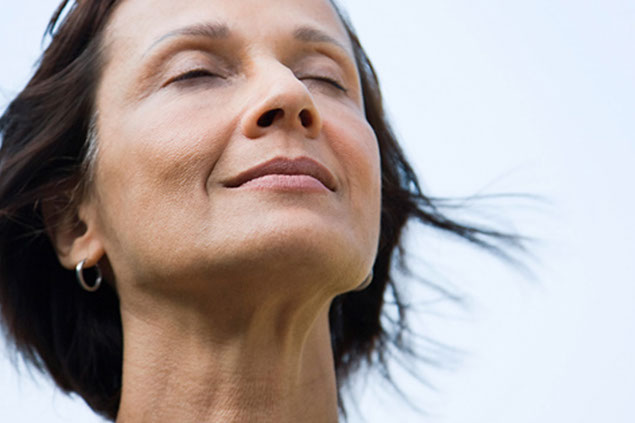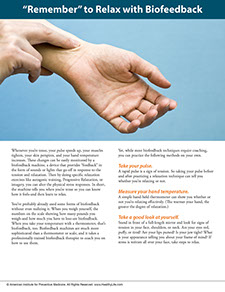"Remember" to Relax with Biofeedback
Print on Demand
Whenever you’re tense, your pulse speeds up, your muscles tighten, your skin perspires, and your hand temperature increases. These changes can be easily monitored by a biofeedback machine, a device that provides “feedback” in the form of sounds or lights that go off in response to the tension and relaxation. Then by doing specific relaxation exercises like autogenic training, Progressive Relaxation, or imagery, you can alter the physical stress responses. In short, the machine tells you when you’re tense so you can know how it feels-and then learn to relax.
You’ve probably already used some forms of biofeedback without even realizing it. When you weigh yourself, the numbers on the scale showing how many pounds you weigh-and how much you have to lose-are biofeedback. When you take your temperature with a thermometer, that’s biofeedback, too. Biofeedback machines are much more sophisticated than a thermometer or scale, and it takes a professionally trained biofeedback therapist to coach you on how to use them.
Yet, while most biofeedback techniques require coaching, you can practice the following methods on your own.
Take your pulse. A rapid pulse is a sign of tension. So taking your pulse before and after practicing a relaxation technique can tell you whether you’re relaxing or not.
Measure your hand temperature. A simple hand-held thermometer can show you whether or not you’re relaxing effectively. (The warmer your hand, the greater the degree of relaxation.)
Take a good look at yourself. Stand in front of a full-length mirror and look for signs of tension in your face, shoulders, or neck. Are your eyes red, puffy, or tired? Are your lips pursed? Is your jaw tight? What is your appearance telling you about your frame of mind? If stress is written all over your face, take steps to relax.
This website is not meant to substitute for expert medical advice or treatment. Follow your doctor’s or health care provider’s advice if it differs from what is given in this guide.
The American Institute for Preventive Medicine (AIPM) is not responsible for the availability or content of external sites, nor does AIPM endorse them. Also, it is the responsibility of the user to examine the copyright and licensing restrictions of external pages and to secure all necessary permission.
The content on this website is proprietary. You may not modify, copy, reproduce, republish, upload, post, transmit, or distribute, in any manner, the material on the website without the written permission of AIPM.
2019 © American Institute for Preventive Medicine - All Rights Reserved. Disclaimer | www.HealthyLife.com




